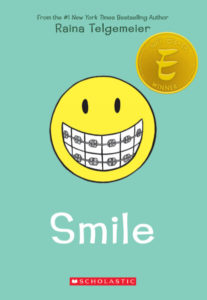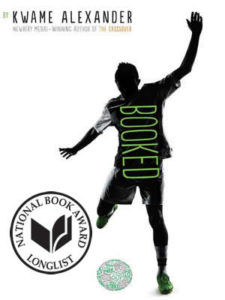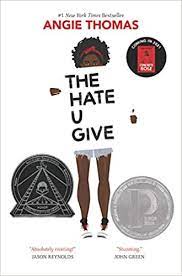
If you’re looking for tips for reluctant readers, you are far from alone. Adults and children alike can struggle to see the appeal of spending an afternoon with their nosed buried in a book. Fortunately, it’s far from impossible to spark (or reignite) a love for reading at any age.
Whether you are the reluctant reader, are the parent or teacher of a child who has demonstrated resistance to reading from the outset, or are the parent or teacher of a child who has suddenly lost interest in reading, Piqosity has assembled a list of tips to help get you started.
What Makes a Child a Reluctant Reader?
Students who prefer not to read or who shuffle their feet when it’s time for language arts class are frequently referred to as “reluctant readers.” For a variety of reasons, most notably a lack of male role models, boys are more likely to be reluctant readers than girls. But reading aversion can stem from a variety of reasons, regardless of assigned sex. These frequently include:
- Lack of Foundational Experience: If a child is not exposed to reading fundamentals at an early age, it will be harder for them to pick up and enjoy reading later on. When a child is behind their peers in reading, they may feel discouraged and be more inclined to avoid reading activities.
- Lack of Interest: When the books and reading topics that kids are exposed to don’t pique their interest or speak to them, they’re less likely to want to read. The books a child is given in school may not feel relevant to them.
- Physical Issues: For some individuals, books with compact lines of text can create sensory overload and/or eyestrain. Readers who experience these issues can feel like the words are literally “jumping out” at them or may experience migraines. There are
- Learning Disabilities: Other individuals may be reluctant readers because they have dyslexia, an oral/written language disorder, a reading comprehension deficit, or another learning disability. These disabilities are likely to affect any individual’s feelings and approach towards reading.
The following tips for reluctant readers are geared more towards individuals who are struggling with the first two issues. While they may apply to readers who struggle with the physical act of reading or who have learning disabilities, we encourage you to speak to a doctor or a literacy specialist to find strategies that work for you or your child/student.
How to Encourage and Motivate Reluctant Readers
How do you make reading fun? If you or your child have a reading aversion, there are a variety of tips for reluctant readers that you can employ to try and reengage with literature. Keep in mind that you’re more likely to be successful in piquing a student’s interests if you adapt to their learning style and encourage them to read for fun.
- Cater to their interests. If the only reason your student is reluctant to read is lack of interest, the easiest way to fix that is with content they’re interested in. If they’re into sports and being physically active, consider introducing them to books about sports figures (fictional and real-life). Keep in mind that the classics are not the be-all-and-end-all, and it’s OK if your child does not gravitate towards those books. Contemporary literature has a lot to offer!
- Give them books with characters similar to themselves. Similar to choosing books that cater to individual interests, books with main characters like the reader are easier to relate to. If your reader is able to identify with the character, they may be more engaged with the story.
- Introduce them to graphic novels and comics. Graphic novels with colorful and vibrant panels are more likely to capture a reluctant reader’s interest than a page full of black and white words. Graphic novels also have short snippets of text, so it’s easier to stay engaged. Worried your child will be reading only onomatopoeias? Don’t be. Graphic novels and comics contain just as many diverse and complex stories today as any other literary genre.
- Give them books with larger print. Books with small print may be overwhelming to a reluctant reader. However, pages with few words and larger print are easier to see and less overstimulating to look at.
- Read out loud. This is a wonderful family activity and a great way to engage a reader who struggles with the physical aspect of reading something on a page. If your child gets bored antsy, try setting them up with a quiet activity like coloring to occupy their hands. This activity is especially helpful if your child is currently reading below their current grade level; they may be getting bored with the subject material that they themselves can read physically.
- Check your local bookstores and libraries for events. One of the best ways to gain a love and appreciation for books is to surround yourself with fellow book lovers and enthusiasts. Many local libraries and bookstores host reading-related activities for both adults and children. Go to them! Meet an author! They’re real people too, just like actors and athletes.
- Use unconventional materials. Reading practice can come from a variety of materials. Instead of giving them books to read, you can assign them news articles, blog posts, or trading cards to read from. If they aren’t physically holding or looking at a book, it may not “feel” like they’re reading.
For more information on what encourages and engages readers, we highly recommend Scholastic’s 7th edition of their Kids and Family Reading Report.
Activities for Reluctant Readers.
On top of finding materials match or pique a reluctant reader’s interests, you may consider engaging them in a few different activities to reinforce learning. Introducing your reluctant reader to games and other activities helps them remember important concepts in an enjoyable manner.
1. Mystery Book Blind Date
More often than not, reluctant students will judge a book by the cover without even knowing the content of the book. To avoid this, consider assigning mystery books. Use brown paper to cover up the book’s cover and have your students read the first three pages. Once they’ve done this, have them write a short review and encourage them to keep reading if they enjoyed the book.
2. Make Genre Passports
Challenge your students to find books in a variety of genres and mark each genre as they read. This is a great project to work on throughout the school year and students will feel a sense of accomplishment as they complete each genre in their passport.
In order to earn a stamp for each genre, the student should be able to answer questions about the title and articulate what they liked and disliked while reading. You can take the time to create your own passport template, or use this one by inourlibrary.
3. Create-Your-Own Comic Strip
Rather than pushing more books on a reluctant reader, sometimes it’s more effective to take a step back. Instead of having them read another author’s work, give them some empty panel paper so they can create their own comic strip. This literacy activity is perfect for students who enjoy creating artwork, but struggle with reading and writing.
Books for Reluctant Readers (That Aren’t Harry Potter)
What would a “tips for reluctant readers” list be without a few book suggestions? While we love the Harry Potter series, it’s not for everyone. To encourage students to read for pleasure, it’s helpful to keep high-interest books in your classroom or around your home. Here are a few titles that have been found by other parents and teachers to be especially helpful in engaging the interests of young reluctant readers.
Smile, by Raina Telgemeier
Age level: Middle Grade
Smile is written in a graphic novel format and follows an autobiographical account of the author’s middle school experience. This book is ideal for reluctant readers because it has minimal text and the story is full of relatable middle school experiences. The storyline is also humorous and remains lighthearted throughout.
Booked, by Kwame Alexander
Age level: Middle Grade
This novel is written in verse, which is a much less intimidating writing style to comprehend, especially for reluctant and unconfident readers. It follows a male protagonist who heavily enjoys sports while also dealing with other heavy and relatable life issues. From bullies to home troubles, reluctant readers are sure to relate to this book in some way.
The Poet X, by Eva Acevedo
Age level: Young Adult
The Poet X is another book written in verse, but it’s definitely geared toward high school audiences. The main protagonist, Xiomara, struggles with balancing her love of slam poetry and her mother’s devout religious practices. Throughout the book, readers follow Xiomara as she works through frustrating experiences by writing poetry.
 The Hate U Give, Angie Thomas
The Hate U Give, Angie Thomas
Age level: Young Adult
Our main protagonist, Starr Carter, is struggling with her place in the world as she balances living in a poor neighborhood with the prep school she attends. One night, she witnesses the fatal shooting of her childhood best friend by a police officer despite being unarmed. The story follows the aftermath of that event and how Starr handles everything. This young adult novel was also adapted into a movie and has become a popular read among high school students since its release.
Want More ELA Remediation Than Tips for Reluctant Readers? Piqosity Can Help.
The tips for reluctant readers mentioned in this article provide ways to help eliminate reading reluctance. But when you have a reluctant reader who needs to prepare for a test, you may need more than help than simple tips like these can provide.
Piqosity offers affordable online courses that your child can take from the comfort and safety of their own home. Depending on your needs, our courses can be used for enrichment, remediation, or test prep! We currently offer test prep for the ACT, Digital SAT, and ISEE, as well as full online courses for 5-11th grade Math and English:
Full-Length Math Courses:
- 5th Grade Math Course
- 6th Grade Math Course
- Pre-Algebra Course
- Algebra I Course
- Geometry Course
- Algebra II Course
- Pre-Calculus Course
These are complete courses available online through our app, which can be purchased separately or received for free when bundled with our ISEE test prep courses! Sign up for free to try out our personalized practice software and take a mini-diagnostic exam to test your student’s current skills.
We hope you found the above reluctant reading tips helpful! We wish you the best of luck (and lots of fun) on all your future reading endeavors and adventures!
More Educational Resources by Piqosity:





 The Hate U Give
The Hate U Give
Leave A Comment